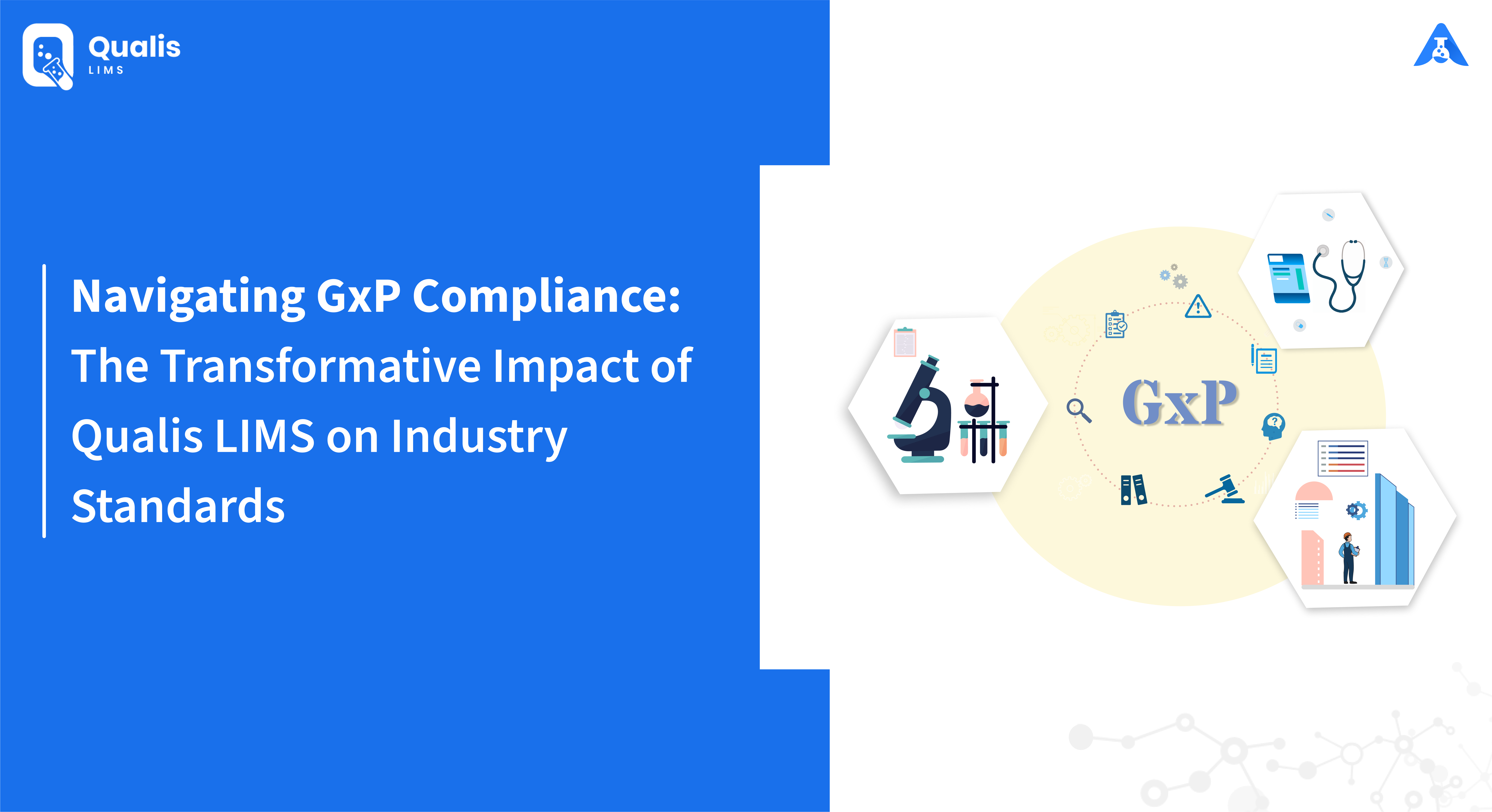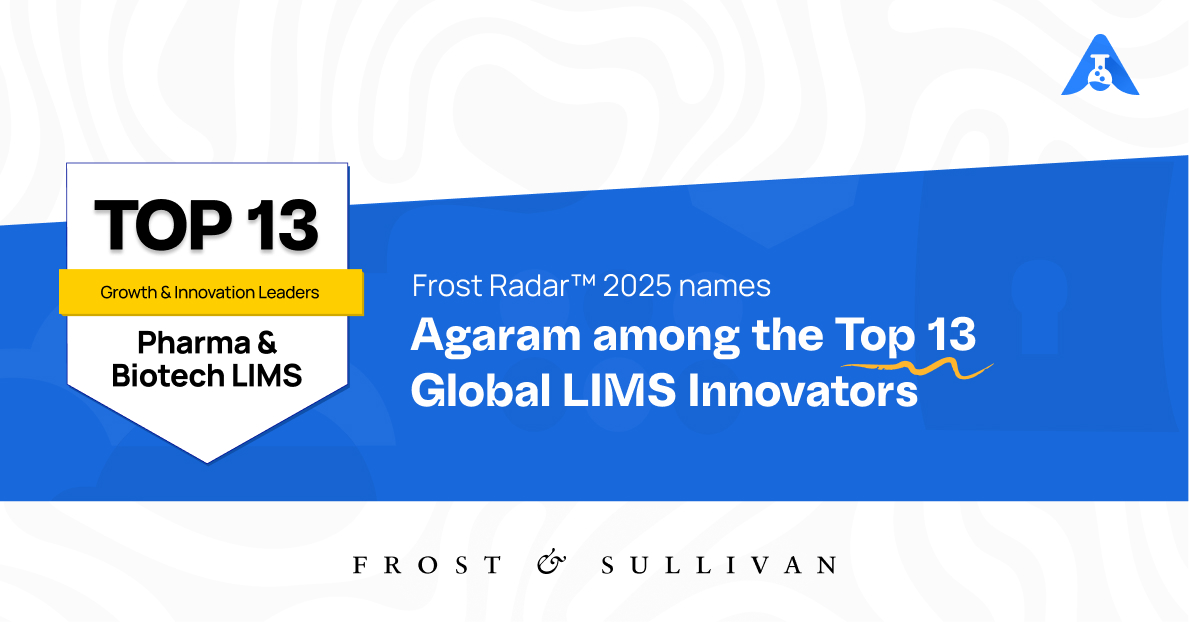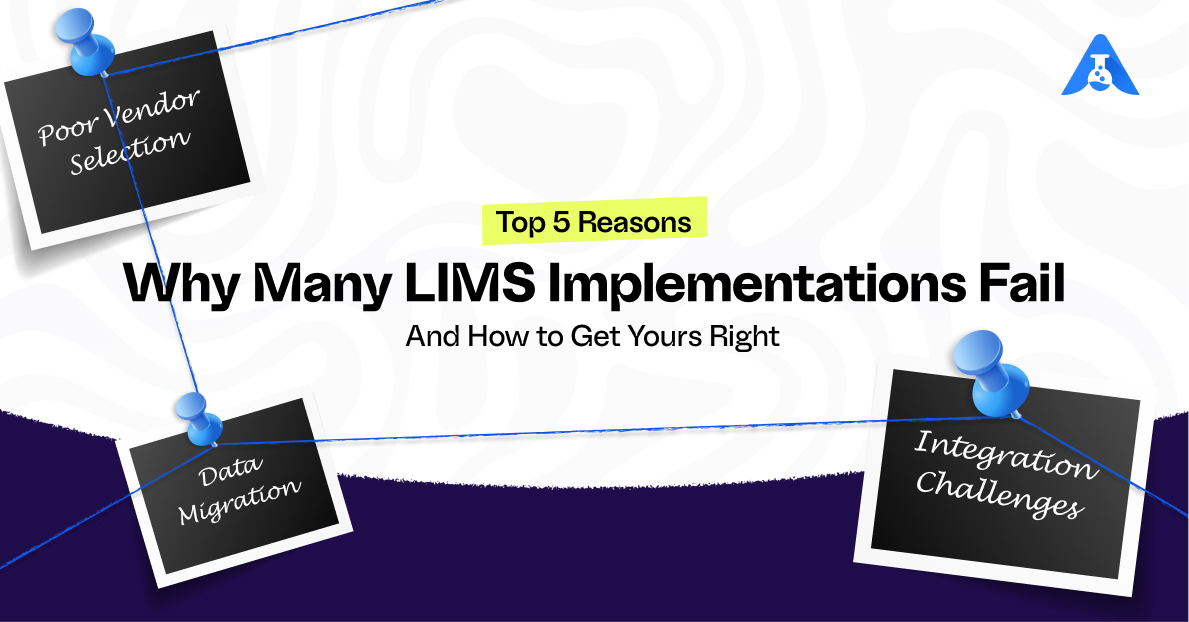GxP refers to a collection of quality guidelines and regulations that ensure that bio/pharma products are safe, meet their intended use, and adhere to quality processes during manufacturing, control, storage, and distribution.
The “G” stands for “Good” and the “P” stands for “Practice”.
The ‘x’ in GxP can be substituted for various terms depending on the application, such as manufacturing, clinical, laboratory, etc.
But how are these GxP practices applied to the various industries and why are they so important?
What solutions can be implemented to ensure that these practices are strictly adhered to?
Let’s find out.
Overview of various categories of GxP
1. Good Manufacturing Practices (GMP):
Purpose: Ensure products are consistently produced and controlled according to quality standards.
Scope: Applies to manufacturing processes including preparation, packing, and storage of products, particularly pharmaceuticals, food, and medical devices.
Key Elements: Quality control, quality assurance, accurate documentation, and the proper management of manufacturing facilities
2. Good Clinical Practices (GCP):
Purpose: Ensure the ethical and scientific quality of the design, conduct, performance, monitoring, auditing, recording, analysis, and reporting of clinical trials.
Scope: Applies to clinical trials involving human subjects, especially in the development of new drugs.
Key Elements: Protection of human rights for the trial subjects, informed consent, and the collection of scientifically valid and robust data.
3. Good Laboratory Practices (GLP):
Purpose: Ensure the consistency, reliability, reproducibility, quality, and integrity of chemicals (including pharmaceuticals) nonclinical safety tests; from physiochemical properties through acute to chronic toxicity tests.
Scope: Applies to non-clinical environmental, health, and safety studies.
Key Elements: Proper planning, performance, monitoring, recording, archiving, and reporting of study data.
4. Good Distribution Practices (GDP):
Purpose: Ensure the quality of medicines is maintained throughout the supply chain, from the point of production to the point of sale.
Scope: Applies to the wholesale distribution of medicinal products, including their procurement, storage, transportation, and handling.
Key Elements: Adequate storage, transportation, handling procedures, and traceability.
5. Good Documentation Practices (GDocP):
Purpose: Ensure that documentation (both paper and electronic) is created, maintained, and retained in a manner that accurately reflects the processes followed and provides an audit trail.
Scope: Applies across all aspects of GxP to ensure compliance and traceability.
Key Elements: Document integrity, security, accessibility, and consistent use of correct and clear entries.
6. Good Pharmacovigilance Practices (GVP):
Purpose: Ensure the appropriate use of medicines and the protection of patients by detecting, assessing, understanding, and preventing adverse effects or any other drug related problems.
Scope: Applies to the monitoring of medicines after they have been licensed and are on the market.
Key Elements: Collection and evaluation of information on the risks and benefits of medicines to support safe and effective use.
Each of these GxP guidelines is critical to different stages of the life cycle of pharmaceuticals and other regulated products. Regulatory authorities like the U.S. FDA, European Medicines Agency, and others enforce these practices to protect public health, ensuring that all products are both effective and safe for use. Compliance with GxP is not only a legal requirement but also a good business practice, as it helps maintain the public trust and the integrity of the market.
Why is following GxP practices non-negotiable?
The adherence to Good Practices (GxP) standards is critical and provides numerous benefits across various industries, especially those involved in the production, control, and distribution of pharmaceuticals, biotechnology products, medical devices, and food. The implementation of GxP has profound impacts on the product’s quality, safety, and efficacy, which are essential for protecting public health and maintaining consumer trust. The following is a breakdown of why following GxP practices is both critical and beneficial:
1. Ensuring Quality and Safety
Purpose: GxP ensures that products are consistently produced and controlled to the quality standards appropriate to their intended use.
Benefit: This reduces the risk of product defects, contamination, and errors, thereby protecting consumers from potentially harmful or ineffective products.
2. Regulatory Compliance
Purpose: Compliance with GxP is required by regulatory bodies around the world, such as the FDA (Food and Drug Administration in the United States) and the EMA (European Medicines Agency).
Benefit: Meeting these regulatory requirements is essential for gaining market approval. Non-compliance can lead to legal penalties, product recalls, and reputational damage.
3. Facilitating Innovation
Purpose: GxP guidelines provide a framework that supports systematic research and development.
Benefit: By fostering a structured development process, GxP helps facilitate innovation and the introduction of new technologies and products into the market.
4. Consumer Confidence
Purpose: Consistent adherence to quality standards reassures consumers about the safety and efficacy of products.
Benefit: High consumer confidence can enhance brand reputation and loyalty, which are crucial for the long-term success of a company.
5. Market Expansion
Purpose: Compliance with international GxP standards can make it easier for companies to enter and compete in global markets.
Benefit: A standardized approach to quality assurance allows companies to meet diverse market requirements, facilitating global trade and expansion.
6. Operational Consistency
Purpose: GxP practices require consistent documentation and processes, which standardize operations across production sites and international borders.
Benefit: This uniformity improves efficiency, reduces costs, and simplifies training and supervision.
7. Risk Management
Purpose: GxP practices involve proactive risk assessment and management throughout the product lifecycle.
Benefit: Early identification and mitigation of risks prevent costly disruptions and ensure continuous supply and product reliability.
8. Data Integrity
Purpose: Good Documentation Practices (GDocP), part of GxP, ensure that all data are complete, consistent, and accurate.
Benefit: Reliable data supports regulatory submissions and decision-making processes, protecting against data falsification or misinterpretation.
Industries Impacted
Pharmaceuticals and Biotech: Directly impacted by almost all GxP areas, especially GMP, GLP, and GCP.
Medical Devices: Especially concerned with GMP and GCP to ensure devices are safe and effective.
Food Production: Primarily influenced by GMP and GDP to ensure food safety and quality.
For all these reasons, GxP is not merely a regulatory obligation; it is a strategic business tool that fosters quality, efficiency, and innovation, thereby enhancing the competitiveness and credibility of companies that comply
What is LIMS?
A Laboratory Information Management System (LIMS) is a software system designed to streamline the management of laboratory data and operations. LIMS is utilized in various scientific and industrial settings where laboratories need to manage large volumes of data, such as in pharmaceuticals, healthcare, environmental science, manufacturing, and research institutions.
Main features of LIMS typically include sample tracking, data management, workflow automation, instrument integration, quality control, and regulatory compliance. By centralizing and automating these processes, LIMS helps laboratories improve efficiency, accuracy, and productivity in their operations. Additionally, LIMS enables better data organization, retrieval, and analysis, facilitating decision-making processes within the laboratory setting.
Qualis LIMS Overview
Agaram Technologies’ Qualis LIMS has been designed to digitally transform laboratories to perform their tasks in an automated and paper-less manner, and more importantly enable them to fulfill regulatory compliance requirements as well as adhere to industry standards.
It is used by laboratories conducting tests/experiments and research in any industrial, commercial, and analytical testing of samples. It provides a structural method to document laboratory investigation results in an automated and paper-less manner besides fulfilling various regulatory compliance and standard requirements.
Role of Qualis LIMS in facilitating GxP
Qualis LIMS (Laboratory Information Management System) plays a significant role in helping laboratories and manufacturing facilities adhere to GxP compliance requirements.
Below is a detailed explanation of how Qualis LIMS facilitates GxP compliance across several critical aspects:
1. Data Integrity
Qualis LIMS ensures data integrity through several mechanisms.
Audit Trails: Every data entry, modification, and deletion is logged with timestamps and user details, making it easy to track who did what and when.
Electronic Signatures: Data entries and changes require electronic signatures, further ensuring that data is accurately recorded and authenticated.
Data Validation: Built-in checks verify data for accuracy and completeness upon entry, preventing incorrect data from being saved.
2. Traceability
Traceability is critical in regulated environments to track the history of a sample or batch of products.
Sample Tracking: Qualis LIMS assigns unique identifiers to samples, allowing users to track the entire lifecycle of a sample — from receipt to disposal.
Chain of Custody: Maintains a detailed record of who handled each sample and when, providing a clear trace of custody which is essential for compliance.
3. Standardization and Consistency
Standardizing processes is key to GxP compliance as it ensures consistency of operational processes and results.
Standard Operating Procedures (SOPs): Qualis LIMS can be configured to enforce SOPs, ensuring that all laboratory processes are carried out in a consistent, predefined manner.
Method Execution: Standard methods can be embedded into workflows, ensuring that each step is performed according to the prescribed standards.
4. Automation and Reduction of Human Errors
Automation significantly reduces the risk of human errors.
Automated Data Entry: Interfaces with laboratory instruments for direct data capture, eliminating manual data entry errors.
Workflow Automation: Automates workflows to ensure steps are performed in the correct sequence, thus reducing the chance of procedural errors.
5. Quality Control and Quality Assurance
Quality is a cornerstone in GxP-regulated environments.
Control Samples and Calibration: Automates the inclusion of control samples and calibration checks within test runs to ensure ongoing reliability of results.
Review and Approval Processes: Configurable review and approval workflows ensure that data is checked and verified at critical stages before final decisions are made.
6. Regulatory Compliance and Regulatory Reporting
Meeting regulatory requirements is integral in regulated industries.
Compliance Features: Qualis LIMS is designed to meet the requirements of regulatory bodies such as the FDA, including 21 CFR Part 11 for electronic records.
Reporting Tools: Generates compliant reports for regulatory submissions, audits, and inspections quickly and reliably.
7. Security and Access Control
Data security is vital when handling sensitive lab data.
User Access Levels: Users are given access based on their role, ensuring they can only access data and functionalities relevant to their responsibilities.
Data Encryption: Ensures that stored data is encrypted, protecting sensitive information from unauthorized access.
8. Integration with Other Systems
Integration capabilities enhance efficiency and data coherence:
ERP Systems: Can be integrated with Enterprise Resource Planning (ERP) systems for a holistic view of operations.
Instrument Integration: Directly connects with laboratory instruments for seamless data transfer, reducing delays and errors associated with manual data handling.
By facilitating these functions, Qualis LIMS not only helps laboratories adhere to regulatory requirements but also enhances their operational efficiencies, thereby supporting the overall quality and reliability of their outputs
Conclusion
Qualis LIMS (Laboratory Information Management System) is a pivotal tool that enables industries to adhere rigorously to various GxP practices, thereby upholding the highest standards of quality, safety, and compliance. As we have explored throughout this blog, the integration of a robust LIMS like Qualis LIMS can significantly streamline processes, enhance data integrity, and facilitate regulatory compliance across diverse sectors including pharmaceuticals, biotechnology, and food production.
Qualis LIMS acts as a cornerstone in managing complex data and processes, making it an invaluable asset for any organization committed to GxP compliance. By automating workflows, enforcing standardized procedures, and ensuring accurate data collection and analysis, Qualis LIMS supports the core objectives of GxP—from Good Manufacturing Practices (GMP) to Good Laboratory Practices (GLP) and beyond. It not only minimizes human errors but also provides a traceable audit trail, which is crucial for meeting stringent regulatory demands and conducting thorough audits and inspections.
Furthermore, the adaptability of Qualis LIMS to the specific needs of an organization means that it can support a wide range of GxP activities, helping businesses not only meet current compliance requirements but also stay prepared for future regulatory changes. The ability of Qualis LIMS to integrate seamlessly with other quality management systems enhances its effectiveness, providing a holistic approach to quality assurance that is both efficient and cost-effective.
In essence, Qualis LIMS is more than just a compliance tool; it is a strategic enabler that empowers industries to maintain the integrity of their products, ensure the safety of their consumers, and uphold their market reputation. As industries continue to evolve and regulatory frameworks become ever more complex, tools like Qualis LIMS will remain essential for companies aiming to excel in quality management and regulatory compliance, proving that investment in such technologies is not just beneficial but essential for sustained success in today’s competitive and regulated environments.





